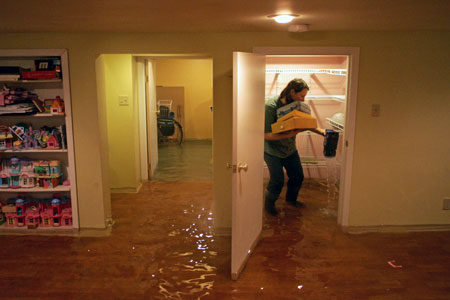Safety
Water damage restoration is one of the most rapidly growing and evolving industries in the country. What used to consist of a contractor setting up a few fans in a flooded basement has now become a bona-fide science, largely in part to the greater understanding we now have of the serious negative health repercussions that can be caused by mold, mildew, and bacteria growth, and the better technologies available to tackle a water restoration job.
Priority Number One—Dry the Place Out
Without question, the most important step a homeowner needs to take when faced with flood or other water damage is to waste no time in drying the area out. As has already been mentioned, the old standby of setting up all of your house fans to dry out a flooded basement or structure really isn’t very effective in the long run. It may do a satisfactory job on the surface, but deeper water damage to walls, wood, carpet and furniture, along with insufficient drying, can lead to more serious consequences such as mold and mildew growth, the flourishing of harmful bacteria, and in extreme conditions, actual damage to the structural integrity of the home itself.
In order to combat all these harmful possibilities, the best thing you can do is to call in a licensed water damage restoration specialist to tackle the job. These professionals are well-schooled in all the latest methods of water damage restoration, and they have access to the most cutting edge technology available to dry out your home and prevent harmful fungi and bacteria from getting a foothold.






